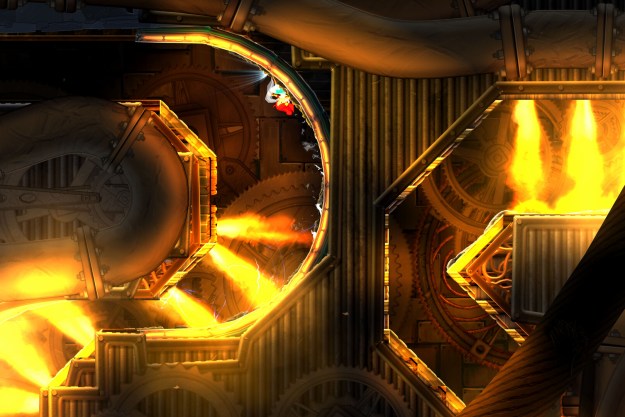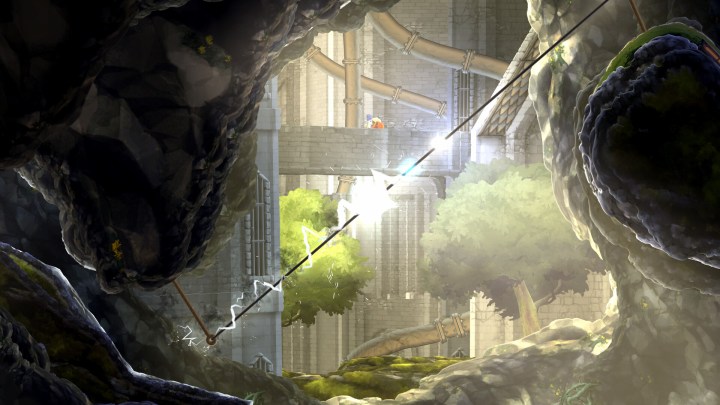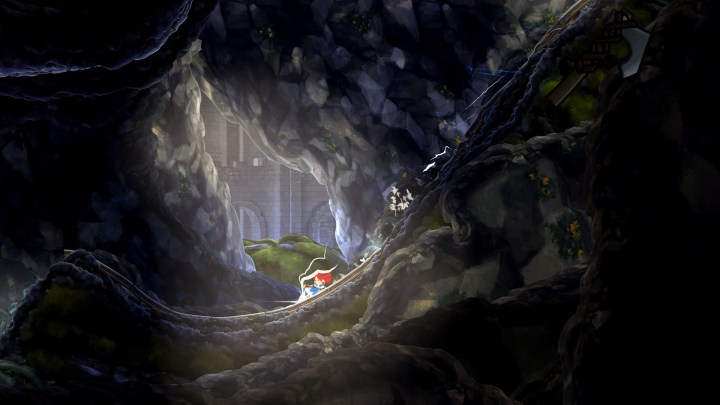
“Teslagrad 2's momentum-based platforming makes for speedy fun, even if it doesn't quite have the same spark as its predecessor.”
- Rich 2D visuals
- Fast, satisfying movement
- Creative magnetic abilities
- Lacking reasons to explore
- One-note bosses
- Thin on memorable puzzles
It’s been nearly a decade since developer Rain Games released Teslagrad, which feels like a lifetime in the modern video game scene. At the time, the magnetism-based 2D puzzle platformer was a clever concept, building on the success of indie hits like Braid and VVVVVV. A lot has changed about the indie gaming scene in that time though, and a singular mechanical hook doesn’t always carry a game in the same way — especially in the age of systems-heavy genre mash-ups like Hades and Slay the Spire.
I can feel that change when playing Teslagrad 2, the freshly released sequel to Rain Games’ 2013 indie darling. Rather than serving up another puzzler built around magnet charges, the new installment takes its defining mechanic and uses it to create a speed-based platformer that feels like it was designed with speedrunners in mind. It’s a well-executed twist that gets more out of the original’s magnet hook, though it makes for a sequel that’s caught somewhere between feeling modern and retro.
Finding the spark
If the first Teslagrad felt like it was following in Braid’s footsteps, Teslagrad 2 almost feels closer to recent games like Celeste. It’s a movement-heavy platformer that has players zipping around colorful Nordic landscapes with a slew of new powers. Story is nestled firmly in the background here, wordlessly telling a vague Viking tale that I never really pieced together by the end. That hardly matters, though, as the setting acts as a good excuse to toss in some Nordic-inspired tunes and environments. Detailed 2D landscapes that bring a lot of depth and detail to its world sell its steampunk setting and make for a colorful improvement over its more retro-styled predecessor.

The basics of the original return here. Early on, I was zipping through obstacles with a spark dash and using magnetic surfaces to either stick onto walls or repel myself over obstacles. That flow changed in a big way around the halfway point when I gained the ability to slide on surfaces at high speeds. Suddenly, I was playing an electrified version of Sonic the Hedgehog where I was zooming around loop-the-loops and chaining that momentum into reflex-heavy platforming. Other abilities had me zipping up wires and waterfalls, further capitalizing on that speed while adding some welcome verticality to the world.
It’s a much different kind of game than the original, one that feels more in line with the kind of precise, speed-based platformer that’s having a moment right now. Basic movement feels satisfying, as the world is filled with roller coaster-like chunks that are satisfying when nailed in one or two tries. In its best moments, it almost feels like a skateboarding game — last year’s standout OlliOlli World came to mind when I was grinding through icy caves and perfectly timing my jumps to avoid spiky vines.
The sequel feels more consistently enjoyable, but it’s a touch less memorable …
What I’m a little less enthused by is the overall framework that the core system finds itself in. Its Metroidvania hook feels a little at odds with its speed-based gameplay. With how much the game relies on forward momentum, I was never moved to backtrack to an earlier part of the world and hunt for secrets once I gained a new power. It didn’t seem like I was missing much either, as the only collectibles don’t appear to have a mechanical purpose — something that drives the genre’s signature exploration. Boss fights further slow down the pace, with one-note encounters that usually test a single power.
Despite enjoying its movement, something about my initial three-hour playthrough felt a little bare. After speeding through it, I went back to the original Teslagrad to try and figure out that missing spark. I was surprised to find a game that felt much more dynamic despite its age. While the sequel has more traversal mechanics, it oddly feels like there’s a little more to do and see in the original. There’s never quite a moment that matches rolling around in a giant metal hamster wheel or platforming around the giant branches of a tree. The sequel feels more consistently enjoyable, but it’s a touch less memorable, with puzzle design that feels a bit flatter overall.

Teslagrad 2 is a perfectly enjoyable platformer that makes for a great Sunday afternoon couch game (it’s a perfect Steam Deck game, especially). It just feels like a sequel that’s hovering between the poles of a horseshoe magnet. It’s a touch more complex than the early 2010s age of single-gimmick platformers, but a little too thin to fit into the modern indie landscape next to titles like Celeste. If the series continues, I hope a third installment can retune its charge and attract it to one end of that magnetic field.
Teslagrad 2 was reviewed on PC and Steam Deck.



